Frequent persons on Mexico's street signs
countries
148 names / 2197 streets
Miguel Hidalgo y Costilla
 208
Don Miguel Gregorio Antonio Ignacio Hidalgo y Costilla Gallaga Mandarte y Villaseñor, more commonly known as Miguel Hidalgo y Costilla or Miguel Hidalgo, was a Catholic priest, leader of the Mexican...
208
Don Miguel Gregorio Antonio Ignacio Hidalgo y Costilla Gallaga Mandarte y Villaseñor, more commonly known as Miguel Hidalgo y Costilla or Miguel Hidalgo, was a Catholic priest, leader of the Mexican...
Benito Juárez
 173
Benito Pablo Juárez García was a Mexican Liberal lawyer and statesman who served as the 26th president of Mexico from 1858 until his death in office in 1872. Of Zapotec ancestry, he was the first and...
173
Benito Pablo Juárez García was a Mexican Liberal lawyer and statesman who served as the 26th president of Mexico from 1858 until his death in office in 1872. Of Zapotec ancestry, he was the first and...
José María Morelos
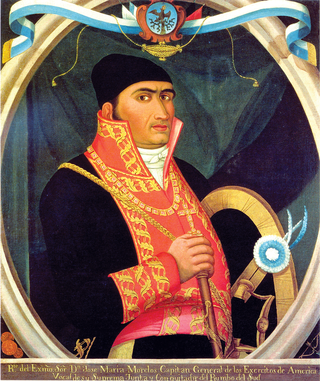 121
José María Teclo Morelos Pérez y Pavón was a Mexican Catholic priest, statesman and military leader who led the Mexican War of Independence movement, assuming its leadership after the execution of...
121
José María Teclo Morelos Pérez y Pavón was a Mexican Catholic priest, statesman and military leader who led the Mexican War of Independence movement, assuming its leadership after the execution of...
Francisco I. Madero
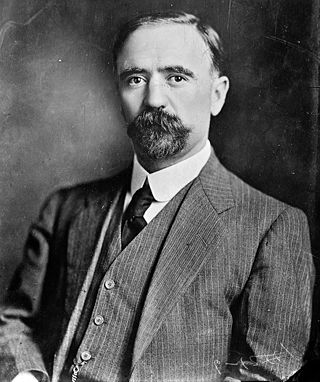 75
Francisco I. Madero González was a Mexican businessman, revolutionary, writer and statesman, who served as the 37th president of Mexico from 1911 until he was deposed in a coup d'état in February...
75
Francisco I. Madero González was a Mexican businessman, revolutionary, writer and statesman, who served as the 37th president of Mexico from 1911 until he was deposed in a coup d'état in February...
Ignacio Zaragoza
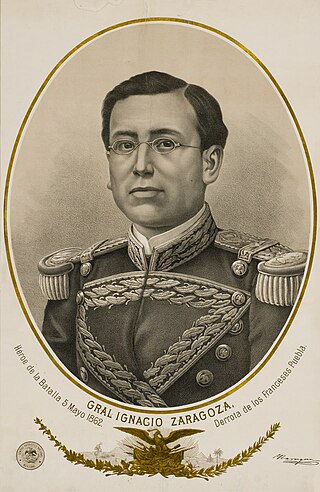 71
Ignacio Zaragoza Seguín was a Mexican general and politician. He led the Mexican army of 600 men that defeated 6,500 invading French forces, including the elite French legionnaires at the Battle of...
71
Ignacio Zaragoza Seguín was a Mexican general and politician. He led the Mexican army of 600 men that defeated 6,500 invading French forces, including the elite French legionnaires at the Battle of...
Vicente Guerrero
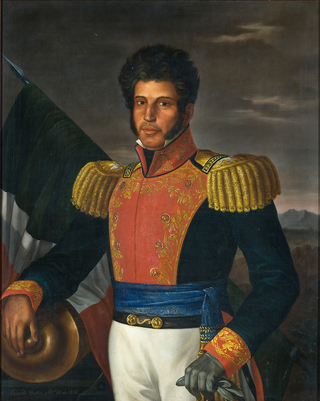 62
Vicente Ramón Guerrero Saldaña was a Mexican soldier and statesman who became the nation's second president. He was one of the leading generals who fought against Spain during the Mexican War of...
62
Vicente Ramón Guerrero Saldaña was a Mexican soldier and statesman who became the nation's second president. He was one of the leading generals who fought against Spain during the Mexican War of...
Ignacio Allende
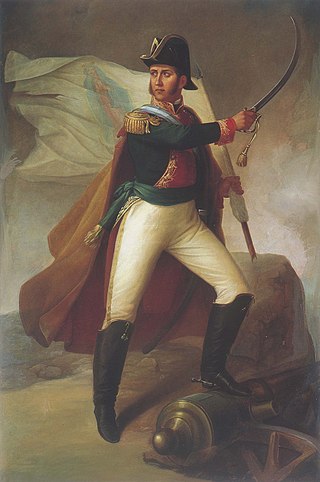 57
Ignacio José de Allende y Unzaga, commonly known as Ignacio Allende, was a captain of the Spanish Army in New Spain who came to sympathize with the Mexican independence movement. He attended the...
57
Ignacio José de Allende y Unzaga, commonly known as Ignacio Allende, was a captain of the Spanish Army in New Spain who came to sympathize with the Mexican independence movement. He attended the...
Emiliano Zapata
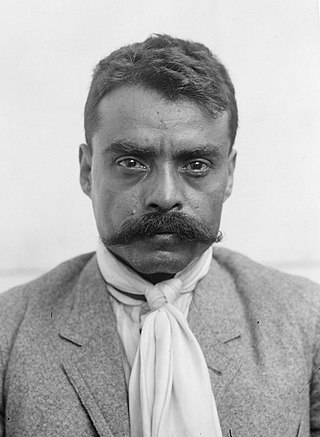 56
Emiliano Zapata Salazar was a Mexican revolutionary. He was a leading figure in the Mexican Revolution of 1910–1920, the main leader of the people's revolution in the Mexican state of Morelos, and...
56
Emiliano Zapata Salazar was a Mexican revolutionary. He was a leading figure in the Mexican Revolution of 1910–1920, the main leader of the people's revolution in the Mexican state of Morelos, and...
Adolfo López Mateos
 55
Adolfo López Mateos was a Mexican politician who served as President of Mexico from 1958 to 1964. Previously, he served as Secretary of Labor and Social Welfare from 1952 to 1957 and a Senator from...
55
Adolfo López Mateos was a Mexican politician who served as President of Mexico from 1958 to 1964. Previously, he served as Secretary of Labor and Social Welfare from 1952 to 1957 and a Senator from...
Niños Héroes
 52
The Niños Héroes were six Mexican military cadets who were killed in the defence of Mexico City during the Battle of Chapultepec, one of the last major battles of the Mexican–American War, on 13...
52
The Niños Héroes were six Mexican military cadets who were killed in the defence of Mexico City during the Battle of Chapultepec, one of the last major battles of the Mexican–American War, on 13...
Lázaro Cárdenas
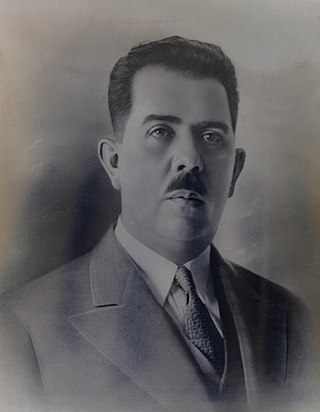 50
Lázaro Cárdenas del Río was a Mexican army officer and politician who served as president of Mexico from 1934 to 1940. Previously, he served as a general in the Constitutional Army during the Mexican...
50
Lázaro Cárdenas del Río was a Mexican army officer and politician who served as president of Mexico from 1934 to 1940. Previously, he served as a general in the Constitutional Army during the Mexican...
Venustiano Carranza
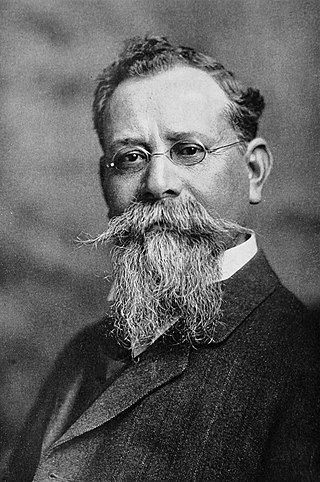 45
José Venustiano Carranza de la Garza was a Mexican land owner and politician who served as President of Mexico from 1917 until his assassination in 1920, during the Mexican Revolution. He was...
45
José Venustiano Carranza de la Garza was a Mexican land owner and politician who served as President of Mexico from 1917 until his assassination in 1920, during the Mexican Revolution. He was...
Cuauhtémoc
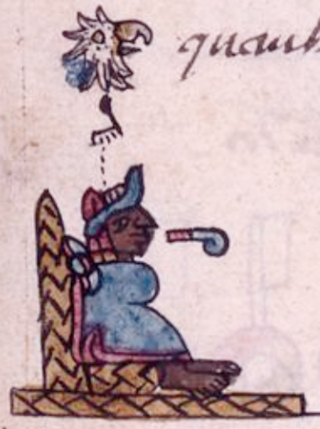 37
Cuauhtémoc, also known as Cuauhtemotzín, Guatimozín, or Guatémoc, was the Aztec ruler (tlatoani) of Tenochtitlan from 1520 to 1521, making him the last Aztec Emperor. The name Cuauhtemōc means "one...
37
Cuauhtémoc, also known as Cuauhtemotzín, Guatimozín, or Guatémoc, was the Aztec ruler (tlatoani) of Tenochtitlan from 1520 to 1521, making him the last Aztec Emperor. The name Cuauhtemōc means "one...
Mariano Matamoros
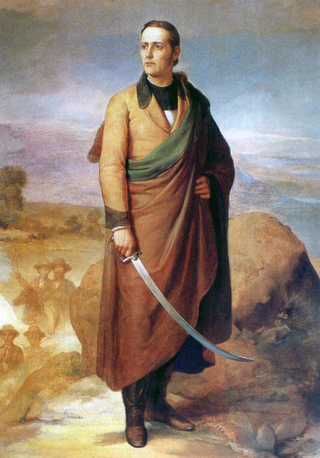 37
Mariano Matamoros y Guridi was a Mexican Roman Catholic priest and revolutionary rebel soldier of the Mexican War of Independence, who fought for independence against Spain in the early 19th century.
37
Mariano Matamoros y Guridi was a Mexican Roman Catholic priest and revolutionary rebel soldier of the Mexican War of Independence, who fought for independence against Spain in the early 19th century.
Juan Aldama
 36
Juan Aldama was a Mexican revolutionary rebel soldier during the Mexican War of Independence in 1810.
36
Juan Aldama was a Mexican revolutionary rebel soldier during the Mexican War of Independence in 1810.
Aquiles Serdán
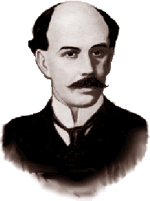 30
Aquiles Serdán Alatriste was a Mexican politician. He was born in the city of Puebla, Puebla, and was a supporter of the Mexican Revolution led by Francisco I. Madero.
30
Aquiles Serdán Alatriste was a Mexican politician. He was born in the city of Puebla, Puebla, and was a supporter of the Mexican Revolution led by Francisco I. Madero.
Melchor Ocampo
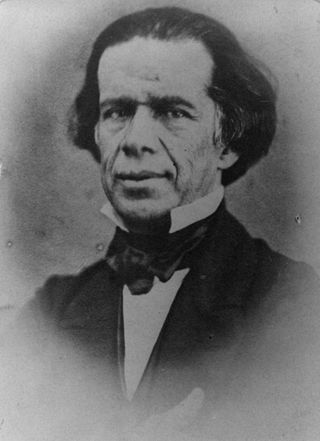 29
Melchor Ocampo was a Mexican lawyer, scientist, and politician. A mestizo and a radical liberal, he was fiercely anticlerical, perhaps an atheist, and his early writings against the Catholic Church...
29
Melchor Ocampo was a Mexican lawyer, scientist, and politician. A mestizo and a radical liberal, he was fiercely anticlerical, perhaps an atheist, and his early writings against the Catholic Church...
Nicolás Bravo
 28
Nicolás Bravo Rueda was a Mexican soldier and politician who served as interim President of Mexico three times, in 1839, 1842, and 1846. Previously, he fought in the Mexican War of Independence, and...
28
Nicolás Bravo Rueda was a Mexican soldier and politician who served as interim President of Mexico three times, in 1839, 1842, and 1846. Previously, he fought in the Mexican War of Independence, and...
Christopher Columbus
 27
Christopher Columbus was an Italian explorer and navigator from the Republic of Genoa who completed four Spanish-based voyages across the Atlantic Ocean sponsored by the Catholic Monarchs, opening...
27
Christopher Columbus was an Italian explorer and navigator from the Republic of Genoa who completed four Spanish-based voyages across the Atlantic Ocean sponsored by the Catholic Monarchs, opening...
Guadalupe Victoria
 27
Guadalupe Victoria, born José Miguel Ramón Adaucto Fernández y Félix, was a Mexican general and politician who fought for independence against the Spanish Empire in the Mexican War of Independence...
27
Guadalupe Victoria, born José Miguel Ramón Adaucto Fernández y Félix, was a Mexican general and politician who fought for independence against the Spanish Empire in the Mexican War of Independence...
Álvaro Obregón
 25
Álvaro Obregón Salido was a Mexican military general and politician who served as the 46th President of Mexico from 1920 to 1924. Obregón was re-elected to the presidency in 1928 but was assassinated...
25
Álvaro Obregón Salido was a Mexican military general and politician who served as the 46th President of Mexico from 1920 to 1924. Obregón was re-elected to the presidency in 1928 but was assassinated...
Miguel Alemán Valdés
 24
Miguel Alemán Valdés was a Mexican politician who served a full term as the President of Mexico from 1946 to 1952, the first civilian president after a string of revolutionary generals.
24
Miguel Alemán Valdés was a Mexican politician who served a full term as the President of Mexico from 1946 to 1952, the first civilian president after a string of revolutionary generals.
Mariano Abasolo
 24
Jose Mariano de Abasolo (1783–1816) was a Mexican revolutionist, born at Dolores, Guanajuato. He participated in the revolution started by Miguel Hidalgo.
24
Jose Mariano de Abasolo (1783–1816) was a Mexican revolutionist, born at Dolores, Guanajuato. He participated in the revolution started by Miguel Hidalgo.
Pancho Villa
 23
Francisco "Pancho" Villa was a Mexican revolutionary and general in the Mexican Revolution. He was a key figure in the revolutionary movement that forced out President Porfirio Díaz and brought...
23
Francisco "Pancho" Villa was a Mexican revolutionary and general in the Mexican Revolution. He was a key figure in the revolutionary movement that forced out President Porfirio Díaz and brought...
Hermenegildo Galeana
 23
Hermenegildo Galeana was a hero of the Mexican War of Independence, one of six brothers who fought in the insurgency. Galeana was considered the right-hand man of secular priest and leader of...
23
Hermenegildo Galeana was a hero of the Mexican War of Independence, one of six brothers who fought in the insurgency. Galeana was considered the right-hand man of secular priest and leader of...
José María Pino Suárez
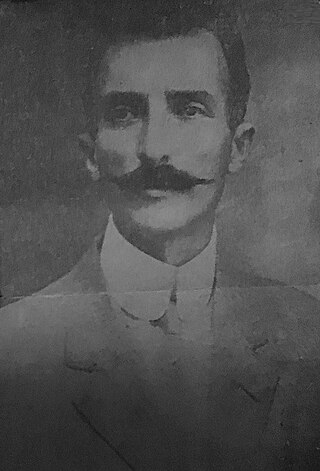 19
José María Pino Suárez was a lawyer, journalist, and politician who was a key figure of the Mexican Revolution. He was a newspaper proprietor who served as the last Vice President of Mexico from 1911...
19
José María Pino Suárez was a lawyer, journalist, and politician who was a key figure of the Mexican Revolution. He was a newspaper proprietor who served as the last Vice President of Mexico from 1911...
Josefa Ortiz de Domínguez
 19
María Josefa Crescencia Ortiz Téllez–Girón, popularly known as Doña Josefa Ortiz de Domínguez or La Corregidora was an insurgent and supporter of the Mexican War of Independence, which fought for...
19
María Josefa Crescencia Ortiz Téllez–Girón, popularly known as Doña Josefa Ortiz de Domínguez or La Corregidora was an insurgent and supporter of the Mexican War of Independence, which fought for...
Mariano Escobedo
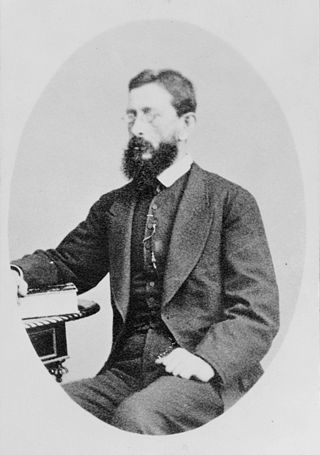 18
Mariano Antonio Guadalupe Escobedo de la Peña was a Mexican Army general and Governor of Nuevo León.
18
Mariano Antonio Guadalupe Escobedo de la Peña was a Mexican Army general and Governor of Nuevo León.
Manuel Ávila Camacho
 18
Manuel Ávila Camacho was a Mexican politician and military leader who served as the President of Mexico from 1940 to 1946. Despite participating in the Mexican Revolution and achieving a high rank,...
18
Manuel Ávila Camacho was a Mexican politician and military leader who served as the President of Mexico from 1940 to 1946. Despite participating in the Mexican Revolution and achieving a high rank,...
Moctezuma II
 18
Motecuhzoma Xocoyotzin, referred to retroactively in European sources as Moctezuma II, was the ninth Emperor of the Aztec Empire, reigning from 1502 or 1503 to 1520. Through his marriage with Queen...
18
Motecuhzoma Xocoyotzin, referred to retroactively in European sources as Moctezuma II, was the ninth Emperor of the Aztec Empire, reigning from 1502 or 1503 to 1520. Through his marriage with Queen...
Martín Francisco Javier Mina y Larrea
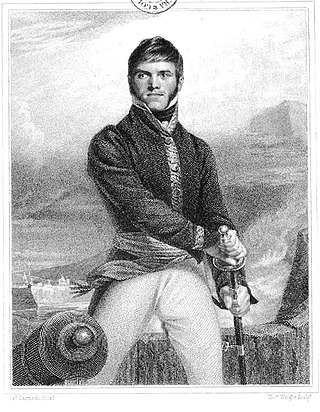 18
General Martín Francisco Javier Mina y Larrea, nicknamed El Mozo or El Estudiante (Student), was a Spanish lawyer and army officer, who later became a Mexican independence figure.
18
General Martín Francisco Javier Mina y Larrea, nicknamed El Mozo or El Estudiante (Student), was a Spanish lawyer and army officer, who later became a Mexican independence figure.
Luis Donaldo Colosio Murrieta
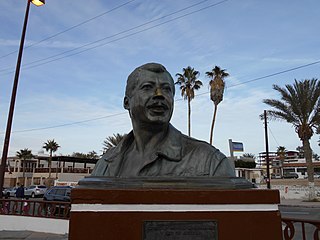 18
Luis Donaldo Colosio Murrieta was a Mexican politician, economist, and Institutional Revolutionary Party (PRI) presidential candidate, who was assassinated at a campaign rally in Tijuana during the...
18
Luis Donaldo Colosio Murrieta was a Mexican politician, economist, and Institutional Revolutionary Party (PRI) presidential candidate, who was assassinated at a campaign rally in Tijuana during the...
Ignacio López Rayón
 16
Ignacio López Rayón was a general who led the insurgent forces of his country after Miguel Hidalgo's death, during the first years of the Mexican War of Independence. He subsequently established the...
16
Ignacio López Rayón was a general who led the insurgent forces of his country after Miguel Hidalgo's death, during the first years of the Mexican War of Independence. He subsequently established the...
Adolfo Ruiz Cortines
 15
Adolfo Tomás Ruiz Cortines was a Mexican politician who served as President of Mexico from 1952 to 1958. A member of the Institutional Revolutionary Party (PRI), he previously served as Governor of...
15
Adolfo Tomás Ruiz Cortines was a Mexican politician who served as President of Mexico from 1952 to 1958. A member of the Institutional Revolutionary Party (PRI), he previously served as Governor of...
Belisario Domínguez
 15
Belisario Domínguez Palencia was a Mexican physician and liberal politician. He served as senator and gave a memorable speech in the Congress during the Mexican Revolution against the dictator...
15
Belisario Domínguez Palencia was a Mexican physician and liberal politician. He served as senator and gave a memorable speech in the Congress during the Mexican Revolution against the dictator...
Plutarco Elías Calles
 15
Plutarco Elías Calles was a Mexican soldier and politician who served as President of Mexico from 1924 to 1928. After the assassination of Álvaro Obregón, Elías Calles founded the Institutional...
15
Plutarco Elías Calles was a Mexican soldier and politician who served as President of Mexico from 1924 to 1928. After the assassination of Álvaro Obregón, Elías Calles founded the Institutional...
Porfirio Díaz
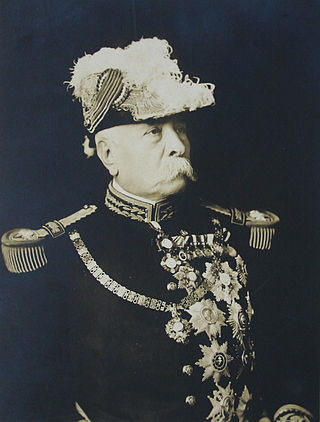 14
José de la Cruz Porfirio Díaz Mori, known as Porfirio Díaz, was a Mexican general, politician, and later dictator who served seven terms as President of Mexico, a total of 35 years, from 28 November...
14
José de la Cruz Porfirio Díaz Mori, known as Porfirio Díaz, was a Mexican general, politician, and later dictator who served seven terms as President of Mexico, a total of 35 years, from 28 November...
Santos Degollado
 14
José Santos Degollado Sánchez was a Mexican Liberal politician and military leader. He was raised by a priest in Michoacán and worked twenty years in the cathedral in Morelia. He became a Federalist...
14
José Santos Degollado Sánchez was a Mexican Liberal politician and military leader. He was raised by a priest in Michoacán and worked twenty years in the cathedral in Morelia. He became a Federalist...
Francis of Assisi
 13
Giovanni di Pietro di Bernardone, known as Francis of Assisi, was an Italian mystic, poet and Catholic friar who founded the religious order of the Franciscans. He was inspired to lead a Christian...
13
Giovanni di Pietro di Bernardone, known as Francis of Assisi, was an Italian mystic, poet and Catholic friar who founded the religious order of the Franciscans. He was inspired to lead a Christian...
Justo Sierra
 13
Justo Sierra Méndez, was a Mexican prominent liberal writer, historian, journalist, poet and political figure during the Porfiriato, in the second half of the nineteenth century and early twentieth...
13
Justo Sierra Méndez, was a Mexican prominent liberal writer, historian, journalist, poet and political figure during the Porfiriato, in the second half of the nineteenth century and early twentieth...
José López Portillo
 13
José Guillermo Abel López Portillo y Pacheco was a Mexican writer, lawyer, and politician affiliated with the Institutional Revolutionary Party (PRI) who served as the 58th president of Mexico from...
13
José Guillermo Abel López Portillo y Pacheco was a Mexican writer, lawyer, and politician affiliated with the Institutional Revolutionary Party (PRI) who served as the 58th president of Mexico from...
Juana Inés de la Cruz
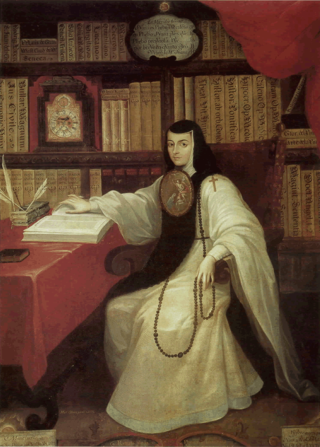 13
Juana Inés de Asbaje y Ramírez de Santillana, better known as Sor Juana Inés de la Cruz, was a colonial Mexican writer, philosopher, composer and poet of the Baroque period, as well as a Hieronymite...
13
Juana Inés de Asbaje y Ramírez de Santillana, better known as Sor Juana Inés de la Cruz, was a colonial Mexican writer, philosopher, composer and poet of the Baroque period, as well as a Hieronymite...
Guillermo Prieto
 12
Guillermo Prieto Pradillo was a Mexican novelist, short-story writer, poet, chronicler, journalist, essayist, patriot and Liberal politician. According to Eladio Cortés, during his lifetime he was...
12
Guillermo Prieto Pradillo was a Mexican novelist, short-story writer, poet, chronicler, journalist, essayist, patriot and Liberal politician. According to Eladio Cortés, during his lifetime he was...
Manuel Doblado
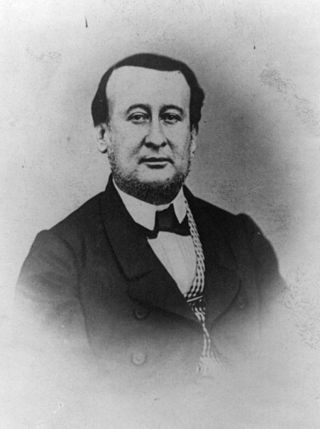 12
Manuel Doblado Partida was a Mexican prominent liberal politician and lawyer who served as congressman, Governor of Guanajuato, Minister of Foreign Affairs (1861) in the cabinet of President Juárez...
12
Manuel Doblado Partida was a Mexican prominent liberal politician and lawyer who served as congressman, Governor of Guanajuato, Minister of Foreign Affairs (1861) in the cabinet of President Juárez...
Francisco Sarabia Tinoco
 11
Francisco Sarabia Tinoco, conocido como Francisco Sarabia, fue un pionero de la aviación comercial mexicana que rompió el récord de velocidad en el vuelo Ciudad de México - Nueva York, con un tiempo...
11
Francisco Sarabia Tinoco, conocido como Francisco Sarabia, fue un pionero de la aviación comercial mexicana que rompió el récord de velocidad en el vuelo Ciudad de México - Nueva York, con un tiempo...
Ricardo Flores Magón
 10
Cipriano Ricardo Flores Magón was a Mexican anarchist and social reform activist. His brothers Enrique and Jesús were also active in politics. Followers of the Flores Magón brothers were known as...
10
Cipriano Ricardo Flores Magón was a Mexican anarchist and social reform activist. His brothers Enrique and Jesús were also active in politics. Followers of the Flores Magón brothers were known as...
Antonio Rosales
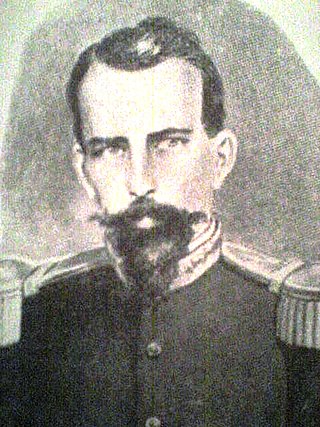 10
José Antonio Abundio de Jesús Rosales Flores (1822-1865) was a Mexican Brigadier General during the Reform War and the Second French intervention in Mexico. Also known as the Hero of San Pedro for...
10
José Antonio Abundio de Jesús Rosales Flores (1822-1865) was a Mexican Brigadier General during the Reform War and the Second French intervention in Mexico. Also known as the Hero of San Pedro for...
Valentín Gómez Farías
 10
Valentín Gómez Farías was a Mexican physician and liberal politician who became president of Mexico twice, first from 1833 to 1834, during the period of the First Mexican Republic, and again from...
10
Valentín Gómez Farías was a Mexican physician and liberal politician who became president of Mexico twice, first from 1833 to 1834, during the period of the First Mexican Republic, and again from...
Ramón Corona
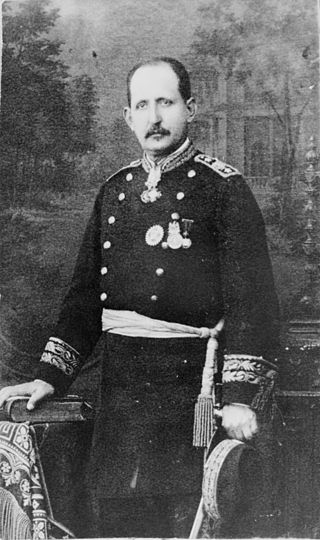 10
Ramón Corona was a liberal Mexican general and diplomat. He served with distinction during the Second French Intervention in Mexico and after the triumph of the republic, the government assigned him...
10
Ramón Corona was a liberal Mexican general and diplomat. He served with distinction during the Second French Intervention in Mexico and after the triumph of the republic, the government assigned him...
Sebastián Lerdo de Tejada
 10
Sebastián Lerdo de Tejada y Corral was a Mexican liberal politician and jurist who served as the 27th president of Mexico from 1872 to 1876.
10
Sebastián Lerdo de Tejada y Corral was a Mexican liberal politician and jurist who served as the 27th president of Mexico from 1872 to 1876.
Leona Vicario
 10
María de la Soledad Leona Camila Vicario Fernández de San Salvador, best known as Leona Vicario, was one of the most prominent figures of the Mexican War of Independence. She was dedicated to...
10
María de la Soledad Leona Camila Vicario Fernández de San Salvador, best known as Leona Vicario, was one of the most prominent figures of the Mexican War of Independence. She was dedicated to...
Andrés Quintana Roo
 9
Andrés Eligio Quintana Roo was a Mexican liberal politician, lawyer, and author. He was the husband of fellow independence activist Leona Vicario.
9
Andrés Eligio Quintana Roo was a Mexican liberal politician, lawyer, and author. He was the husband of fellow independence activist Leona Vicario.
José María Arteaga
 9
José María Cayetano Arteaga Magallanes was a prominent Mexican politician and general who served in the Mexican–American War, the Reform War and the Second French intervention in Mexico. Executed by...
9
José María Cayetano Arteaga Magallanes was a prominent Mexican politician and general who served in the Mexican–American War, the Reform War and the Second French intervention in Mexico. Executed by...
Ignacio Aldama
 9
Ignacio Aldama was a Mexican revolutionary and brother of Juan Aldama.
9
Ignacio Aldama was a Mexican revolutionary and brother of Juan Aldama.
Amado Nervo
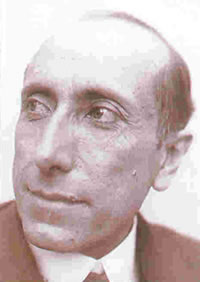 9
Amado Nervo also known as Juan Crisóstomo Ruiz de Nervo, was a Mexican poet, journalist and educator. He also acted as Mexican Ambassador to Argentina and Uruguay. His poetry was known for its use of...
9
Amado Nervo also known as Juan Crisóstomo Ruiz de Nervo, was a Mexican poet, journalist and educator. He also acted as Mexican Ambassador to Argentina and Uruguay. His poetry was known for its use of...
Rodolfo Sánchez Taboada
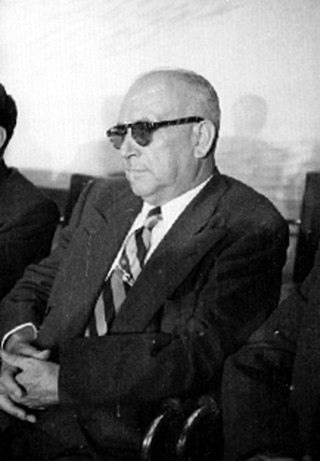 9
Rodolfo Sánchez Taboada fue un militar y político mexicano que participó en la Revolución Mexicana, se desempeñó como jefe militar en Mazatlán Sinaloa, Jefe de la oficina de Quejas con Lázaro...
9
Rodolfo Sánchez Taboada fue un militar y político mexicano que participó en la Revolución Mexicana, se desempeñó como jefe militar en Mazatlán Sinaloa, Jefe de la oficina de Quejas con Lázaro...
José Vasconcelos
 8
José Vasconcelos Calderón, called the "cultural caudillo" of the Mexican Revolution, was an important Mexican writer, philosopher, and politician. He is one of the most influential and controversial...
8
José Vasconcelos Calderón, called the "cultural caudillo" of the Mexican Revolution, was an important Mexican writer, philosopher, and politician. He is one of the most influential and controversial...
Vasco de Quiroga
 8
Vasco de Quiroga was the first bishop of Michoacán, Mexico, and one of the judges (oidores) in the second Real Audiencia of Mexico – the high court that governed New Spain – from January 10, 1531, to...
8
Vasco de Quiroga was the first bishop of Michoacán, Mexico, and one of the judges (oidores) in the second Real Audiencia of Mexico – the high court that governed New Spain – from January 10, 1531, to...
Isidore the Laborer
 8
Isidore the Laborer, also known as Isidore the Farmer, was a Spanish farmworker known for his piety toward the poor and animals. He is the Catholic patron saint of farmers, and of Madrid; El...
8
Isidore the Laborer, also known as Isidore the Farmer, was a Spanish farmworker known for his piety toward the poor and animals. He is the Catholic patron saint of farmers, and of Madrid; El...
Emilio Carranza
 8
Captain Emilio Carranza Rodríguez, was a noted Mexican aviator and national hero, nicknamed the "Lindbergh of Mexico". He was killed on the return part of a historic goodwill flight from Mexico City...
8
Captain Emilio Carranza Rodríguez, was a noted Mexican aviator and national hero, nicknamed the "Lindbergh of Mexico". He was killed on the return part of a historic goodwill flight from Mexico City...
Pedro Moreno (soldier)
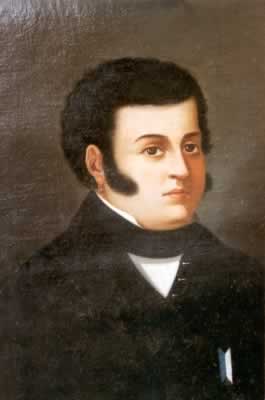 8
Pedro Moreno Gonzalez, was an insurgent in the Mexican War of Independence.
8
Pedro Moreno Gonzalez, was an insurgent in the Mexican War of Independence.
Luis Echeverría
 7
Luis Echeverría Álvarez was a Mexican lawyer, academic, and politician affiliated with the Institutional Revolutionary Party (PRI), who served as the 57th president of Mexico from 1970 to 1976....
7
Luis Echeverría Álvarez was a Mexican lawyer, academic, and politician affiliated with the Institutional Revolutionary Party (PRI), who served as the 57th president of Mexico from 1970 to 1976....
Salvador Díaz Mirón
 7
Salvador Díaz Mirón was a Mexican poet. He was born in the port city of Veracruz. His early verse, written in a passionate, romantic style, was influenced by Lord Byron and Victor Hugo. His later...
7
Salvador Díaz Mirón was a Mexican poet. He was born in the port city of Veracruz. His early verse, written in a passionate, romantic style, was influenced by Lord Byron and Victor Hugo. His later...
Saint Lawrence
 7
Saint Lawrence or Laurence was one of the seven deacons of the city of Rome under Pope Sixtus II who were martyred in the persecution of the Christians that the Roman Emperor Valerian ordered in 258.
7
Saint Lawrence or Laurence was one of the seven deacons of the city of Rome under Pope Sixtus II who were martyred in the persecution of the Christians that the Roman Emperor Valerian ordered in 258.
Gustavo Díaz Ordaz
 7
Gustavo Díaz Ordaz Bolaños was a Mexican politician and member of the Institutional Revolutionary Party (PRI). He served as the President of Mexico from 1964 to 1970. Previously, he served as a...
7
Gustavo Díaz Ordaz Bolaños was a Mexican politician and member of the Institutional Revolutionary Party (PRI). He served as the President of Mexico from 1964 to 1970. Previously, he served as a...
Felipe Ángeles
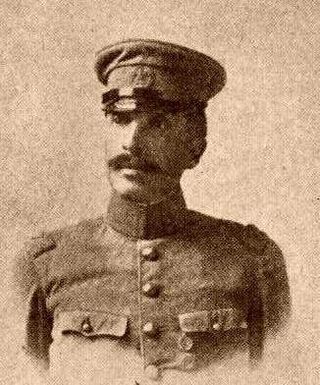 7
Felipe Ángeles Ramírez (1868–1919) was a Mexican military officer and revolutionary during the era of the Mexican Revolution. Having risen to the rank of colonel of artillery in the Federal Army of...
7
Felipe Ángeles Ramírez (1868–1919) was a Mexican military officer and revolutionary during the era of the Mexican Revolution. Having risen to the rank of colonel of artillery in the Federal Army of...
Ignacio Vallarta
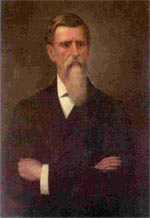 6
Ignacio Luis Vallarta Ogazón was a Mexican jurist and governor of the Mexican state of Jalisco (1872–1876). His baptismal name was José Luis Miguel Ignacio Vallarta Ogazón.
6
Ignacio Luis Vallarta Ogazón was a Mexican jurist and governor of the Mexican state of Jalisco (1872–1876). His baptismal name was José Luis Miguel Ignacio Vallarta Ogazón.
Nezahualcoyotl (tlatoani)
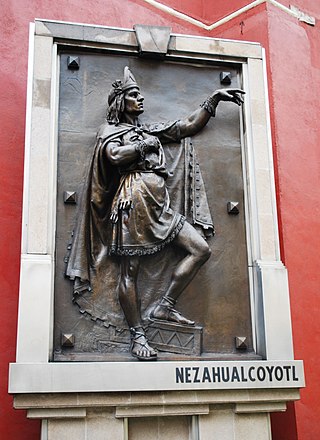 6
Nezahualcoyotl was a scholar, philosopher (tlamatini), warrior, architect, poet and ruler (tlatoani) of the city-state of Texcoco in pre-Columbian era Mexico. Unlike other high-profile Mexican...
6
Nezahualcoyotl was a scholar, philosopher (tlamatini), warrior, architect, poet and ruler (tlatoani) of the city-state of Texcoco in pre-Columbian era Mexico. Unlike other high-profile Mexican...
Miguel Negrete
 6
José Miguel Pascual Negrete Novoa, commonly known as Miguel Negrete was a 19th-century Mexican Major General. He participated in the many Mexican Civil Wars, as well as the Mexican–American War and...
6
José Miguel Pascual Negrete Novoa, commonly known as Miguel Negrete was a 19th-century Mexican Major General. He participated in the many Mexican Civil Wars, as well as the Mexican–American War and...
Leandro Valle Martínez
 6
Leandro Valle Martínez fue un general liberal mexicano, aliado del presidente Benito Juárez durante la Guerra de Reforma.
6
Leandro Valle Martínez fue un general liberal mexicano, aliado del presidente Benito Juárez durante la Guerra de Reforma.
Ferdinand III of Castile
 6
Ferdinand III, called the Saint, was King of Castile from 1217 and King of León from 1230 as well as King of Galicia from 1231. He was the son of Alfonso IX of León and Berenguela of Castile. Through...
6
Ferdinand III, called the Saint, was King of Castile from 1217 and King of León from 1230 as well as King of Galicia from 1231. He was the son of Alfonso IX of León and Berenguela of Castile. Through...
Xicotencatl II
 6
Xicotencatl II Axayacatl, also known as Xicotencatl the Younger, was a prince and warleader, probably with the title of Tlacochcalcatl, of the pre-Columbian state of Tlaxcala at the time of the...
6
Xicotencatl II Axayacatl, also known as Xicotencatl the Younger, was a prince and warleader, probably with the title of Tlacochcalcatl, of the pre-Columbian state of Tlaxcala at the time of the...
Ignacio Manuel Altamirano
 6
Ignacio Manuel Altamirano Basilio was a Mexican radical liberal writer, journalist, teacher and politician. He wrote Clemencia (1869), which is often considered to be the first modern Mexican novel.
6
Ignacio Manuel Altamirano Basilio was a Mexican radical liberal writer, journalist, teacher and politician. He wrote Clemencia (1869), which is often considered to be the first modern Mexican novel.
Manuel Clouthier
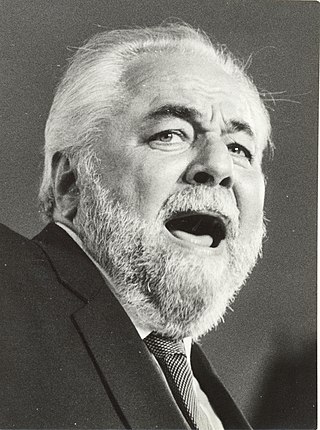 6
Manuel de Jesús Clouthier del Rincón was a Mexican agriculturalist, businessman and politician. His 1988 presidential campaign challenged the dominance of Mexico's PRI party in the nation's politics,...
6
Manuel de Jesús Clouthier del Rincón was a Mexican agriculturalist, businessman and politician. His 1988 presidential campaign challenged the dominance of Mexico's PRI party in the nation's politics,...
Anthony of Padua
 6
Anthony of Padua, OFM or Anthony of Lisbon was a Portuguese Catholic priest and friar of the Franciscan Order.
6
Anthony of Padua, OFM or Anthony of Lisbon was a Portuguese Catholic priest and friar of the Franciscan Order.
Miguel Ángel de Quevedo
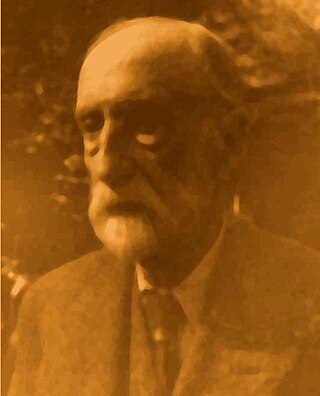 5
Miguel Ángel de Quevedo was a Mexican architect, engineer, and environmentalist who founded Mexico City's Viveros de Coyoacán arboretum, as well as numerous other construction projects in Mexico...
5
Miguel Ángel de Quevedo was a Mexican architect, engineer, and environmentalist who founded Mexico City's Viveros de Coyoacán arboretum, as well as numerous other construction projects in Mexico...
Isabella I of Castile
 5
Isabella I, also called Isabella the Catholic, was Queen of Castile and León from 1474 until her death in 1504. She was also Queen of Aragon from 1479 until her death as the wife of King Ferdinand...
5
Isabella I, also called Isabella the Catholic, was Queen of Castile and León from 1474 until her death in 1504. She was also Queen of Aragon from 1479 until her death as the wife of King Ferdinand...
Jesús González Ortega
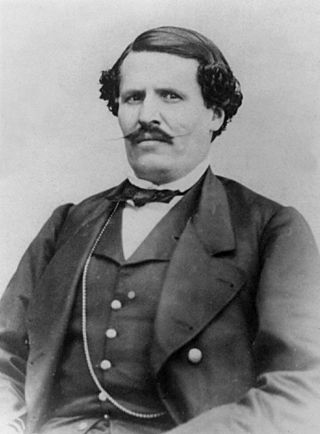 5
Jesús González Ortega was a Mexican soldier and politician; governor of Zacatecas who was a notable ally of President Benito Juárez during the War of Reform and during the French intervention in...
5
Jesús González Ortega was a Mexican soldier and politician; governor of Zacatecas who was a notable ally of President Benito Juárez during the War of Reform and during the French intervention in...
Manuel Acuña
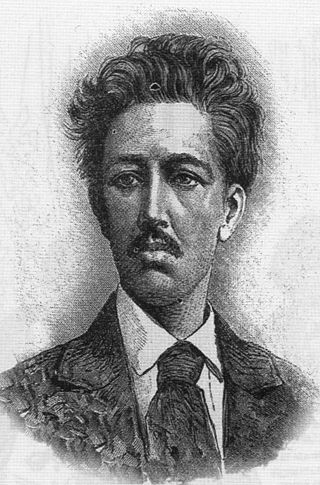 5
Manuel Acuña Navarro was a 19th-century Mexican writer. He focused on poetry but also wrote some novels and plays. He committed suicide at age 24. It is not certain why he killed himself, but it is...
5
Manuel Acuña Navarro was a 19th-century Mexican writer. He focused on poetry but also wrote some novels and plays. He committed suicide at age 24. It is not certain why he killed himself, but it is...
Miguel Lerdo de Tejada
 5
Miguel Lerdo de Tejada was a Mexican statesman, a leader of the Revolution of Ayutla, and author of the Lerdo Law, extinguishing the right of corporations, including the Roman Catholic Church and...
5
Miguel Lerdo de Tejada was a Mexican statesman, a leader of the Revolution of Ayutla, and author of the Lerdo Law, extinguishing the right of corporations, including the Roman Catholic Church and...
Mariano Arista
 5
José Mariano Arista was a Mexican soldier and politician who also became president of Mexico.
5
José Mariano Arista was a Mexican soldier and politician who also became president of Mexico.
Saint Joseph
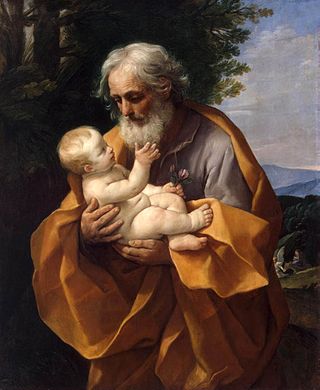 5
Joseph was a 1st-century Jewish man of Nazareth who, according to the canonical Gospels, was married to Mary, the mother of Jesus, and was the legal father of Jesus.
5
Joseph was a 1st-century Jewish man of Nazareth who, according to the canonical Gospels, was married to Mary, the mother of Jesus, and was the legal father of Jesus.
Saint Cecilia
 5
Saint Cecilia, also spelled Cecelia, was a Roman virgin martyr and is venerated in Catholic, Orthodox, Anglican, and some Lutheran churches, such as the Church of Sweden. She became the patroness of...
5
Saint Cecilia, also spelled Cecelia, was a Roman virgin martyr and is venerated in Catholic, Orthodox, Anglican, and some Lutheran churches, such as the Church of Sweden. She became the patroness of...
Abraham Lincoln
 5
Abraham Lincoln was an American lawyer, politician, and statesman, who served as the 16th president of the United States, from 1861 until his assassination in 1865. Lincoln led the United States...
5
Abraham Lincoln was an American lawyer, politician, and statesman, who served as the 16th president of the United States, from 1861 until his assassination in 1865. Lincoln led the United States...
Pope John Paul II
 5
Pope John Paul II was head of the Catholic Church and sovereign of the Vatican City State from 1978 until his death in 2005.
5
Pope John Paul II was head of the Catholic Church and sovereign of the Vatican City State from 1978 until his death in 2005.
Alfredo del Mazo Maza
 5
Alfredo del Mazo Maza is a Mexican politician affiliated to the Institutional Revolutionary Party (PRI) who served as Governor of the State of Mexico from 2017 to 2023. Members of del Mazo's family...
5
Alfredo del Mazo Maza is a Mexican politician affiliated to the Institutional Revolutionary Party (PRI) who served as Governor of the State of Mexico from 2017 to 2023. Members of del Mazo's family...
Manuel Gómez Morín
 5
Manuel Gómez Morín was a Mexican politician. He was a founding member of the National Action Party, and one of its theoreticians. Prior to this he was considered a leading figure in Mexican monetary...
5
Manuel Gómez Morín was a Mexican politician. He was a founding member of the National Action Party, and one of its theoreticians. Prior to this he was considered a leading figure in Mexican monetary...
José Martí
 4
José Julián Martí Pérez was a Cuban nationalist, poet, philosopher, essayist, journalist, translator, professor, and publisher, who is considered a Cuban national hero because of his role in the...
4
José Julián Martí Pérez was a Cuban nationalist, poet, philosopher, essayist, journalist, translator, professor, and publisher, who is considered a Cuban national hero because of his role in the...
Eugenio Garza Sada
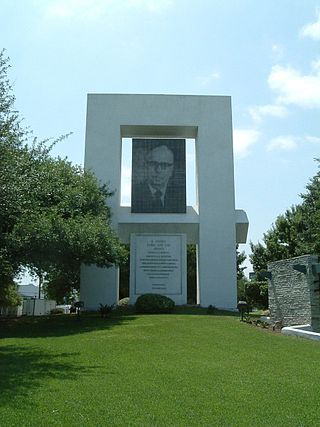 4
Eugenio Garza Sada was an industrialist in the city of Monterrey, Mexico best known for founding the Instituto Tecnologico y de Estudios Superiores de Monterrey (ITESM) school system in the country....
4
Eugenio Garza Sada was an industrialist in the city of Monterrey, Mexico best known for founding the Instituto Tecnologico y de Estudios Superiores de Monterrey (ITESM) school system in the country....
Diego Rivera
 4
Diego María de la Concepción Juan Nepomuceno Estanislao de la Rivera y Barrientos Acosta y Rodríguez, known as Diego Rivera, was a prominent Mexican painter. His large frescoes helped establish the...
4
Diego María de la Concepción Juan Nepomuceno Estanislao de la Rivera y Barrientos Acosta y Rodríguez, known as Diego Rivera, was a prominent Mexican painter. His large frescoes helped establish the...
Juventino Rosas
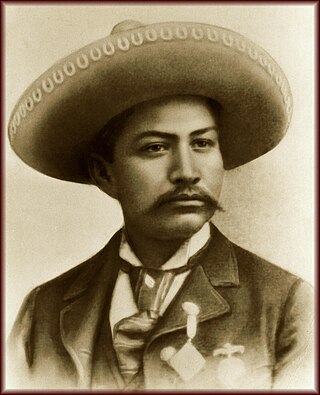 4
José Juventino Policarpo Rosas Cadenas was a Mexican composer and violinist.
4
José Juventino Policarpo Rosas Cadenas was a Mexican composer and violinist.
Alfonso Reyes
 4
Alfonso Reyes Ochoa was a Mexican writer, philosopher and diplomat. He was nominated for the Nobel Prize in Literature five times and has been acclaimed as one of the greatest authors in Spanish...
4
Alfonso Reyes Ochoa was a Mexican writer, philosopher and diplomat. He was nominated for the Nobel Prize in Literature five times and has been acclaimed as one of the greatest authors in Spanish...
Úrsulo Galván Reyes
 4
Úrsulo Galván Reyes fue un líder agrarista mexicano conocido como "El Apóstol Jarocho del Agrarismo", fundador de la Liga de Comunidades Agrarias del Estado de Veracruz y de la Liga Nacional...
4
Úrsulo Galván Reyes fue un líder agrarista mexicano conocido como "El Apóstol Jarocho del Agrarismo", fundador de la Liga de Comunidades Agrarias del Estado de Veracruz y de la Liga Nacional...
Felipe Carrillo Puerto
 4
Felipe Carrillo Puerto was a Mexican journalist, politician and revolutionary who became known for his efforts at reconciliation between the Yucatec Maya and the Mexican government after the Caste...
4
Felipe Carrillo Puerto was a Mexican journalist, politician and revolutionary who became known for his efforts at reconciliation between the Yucatec Maya and the Mexican government after the Caste...
Prisciliano Sánchez Padilla
 4
Prisciliano Sánchez Padilla fue el primer gobernador constitucional del estado de Jalisco (México), diputado anteriormente, simpatizaba con las ideas independentistas y consideraba benéfico que los...
4
Prisciliano Sánchez Padilla fue el primer gobernador constitucional del estado de Jalisco (México), diputado anteriormente, simpatizaba con las ideas independentistas y consideraba benéfico que los...
Felipe de Jesús Villanueva Gutiérrez
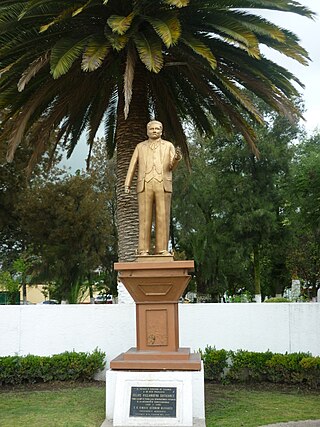 4
Felipe de Jesús Villanueva Gutiérrez was a Mexican violinist, virtuoso pianist and composer. Villanueva remains one of the most well-known figures of the Mexican musical romanticism – flourishing...
4
Felipe de Jesús Villanueva Gutiérrez was a Mexican violinist, virtuoso pianist and composer. Villanueva remains one of the most well-known figures of the Mexican musical romanticism – flourishing...
Narciso Mendoza
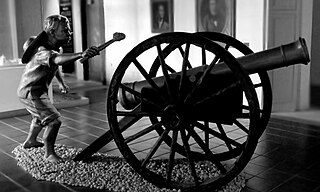 4
Narciso García Mendoza fue un militar mexicano que participó en la Independencia de México y en la Segunda intervención francesa en México. Es conocido como el "Niño Artillero" por su papel como...
4
Narciso García Mendoza fue un militar mexicano que participó en la Independencia de México y en la Segunda intervención francesa en México. Es conocido como el "Niño Artillero" por su papel como...
Pablo Neruda
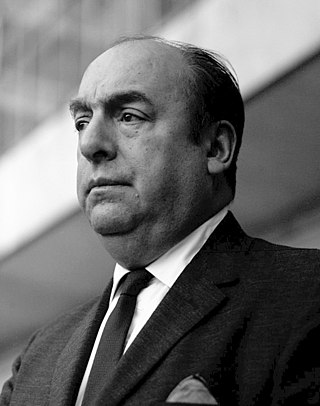 4
Pablo Neruda was a Chilean poet-diplomat and politician who won the 1971 Nobel Prize in Literature. Neruda became known as a poet when he was 13 years old and wrote in a variety of styles, including...
4
Pablo Neruda was a Chilean poet-diplomat and politician who won the 1971 Nobel Prize in Literature. Neruda became known as a poet when he was 13 years old and wrote in a variety of styles, including...
Raphael (archangel)
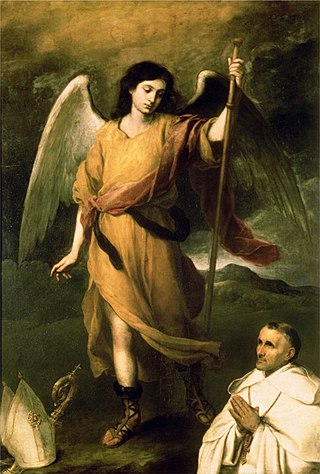 4
Raphael is an archangel first mentioned in the Book of Tobit and in 1 Enoch, both estimated to date from between the 3rd and 2nd century BCE. In later Jewish tradition, he became identified as one of...
4
Raphael is an archangel first mentioned in the Book of Tobit and in 1 Enoch, both estimated to date from between the 3rd and 2nd century BCE. In later Jewish tradition, he became identified as one of...
Abelardo L. Rodríguez
 4
Abelardo Rodríguez Luján, commonly known as Abelardo L. Rodríguez was a Mexican military officer, businessman and politician who served as Substitute President of Mexico from 1932 to 1934. He...
4
Abelardo Rodríguez Luján, commonly known as Abelardo L. Rodríguez was a Mexican military officer, businessman and politician who served as Substitute President of Mexico from 1932 to 1934. He...
Félix Cuevas
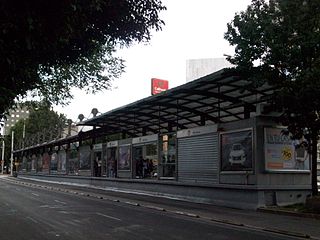 4
Félix de las Cuevas González, más conocido como Félix Cuevas, fue un empresario y filántropo español.
4
Félix de las Cuevas González, más conocido como Félix Cuevas, fue un empresario y filántropo español.
Didacus of Alcalá
 4
Didacus of Alcalá, also known as Diego de San Nicolás, was a Spanish Franciscan lay brother who served among the first group of missionaries to the newly conquered Canary Islands. He died at Alcalá...
4
Didacus of Alcalá, also known as Diego de San Nicolás, was a Spanish Franciscan lay brother who served among the first group of missionaries to the newly conquered Canary Islands. He died at Alcalá...
Gabino Barreda
 4
Gabino Barreda was a Mexican physician, philosopher and politician oriented to French positivism. He served in both the Senate and the Chamber of Deputies.
4
Gabino Barreda was a Mexican physician, philosopher and politician oriented to French positivism. He served in both the Senate and the Chamber of Deputies.
Philip the Apostle
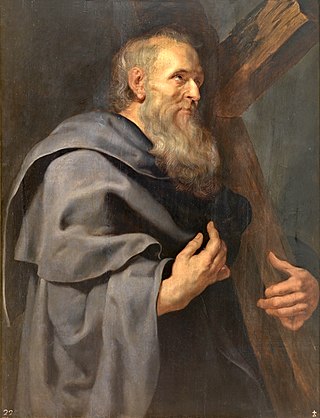 4
Philip the Apostle was one of the Twelve Apostles of Jesus according to the New Testament. Later Christian traditions describe Philip as the apostle who preached in Greece, Syria, and Asia-Minor.
4
Philip the Apostle was one of the Twelve Apostles of Jesus according to the New Testament. Later Christian traditions describe Philip as the apostle who preached in Greece, Syria, and Asia-Minor.
Maclovio Herrera
 4
Maclovio Herrera Cano fue un militar mexicano que participó en la Revolución mexicana.
4
Maclovio Herrera Cano fue un militar mexicano que participó en la Revolución mexicana.
Gabriel Leyva Solano
 4
Gabriel Leyva Solano fue un militar y docente mexicano, defensor de campesinos y luchador de la Revolución mexicana.
4
Gabriel Leyva Solano fue un militar y docente mexicano, defensor de campesinos y luchador de la Revolución mexicana.
Mary, mother of Jesus
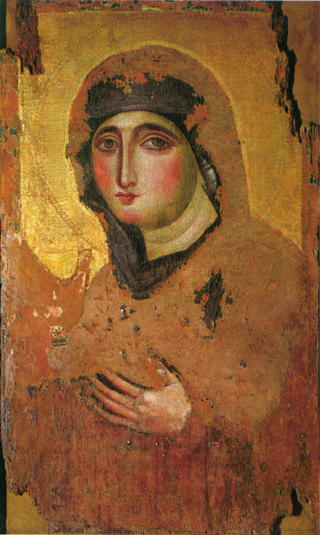 4
Mary was a first-century Jewish woman of Nazareth, the wife of Joseph and the mother of Jesus. She is a central figure of Christianity, venerated under various titles such as virgin or queen, many of...
4
Mary was a first-century Jewish woman of Nazareth, the wife of Joseph and the mother of Jesus. She is a central figure of Christianity, venerated under various titles such as virgin or queen, many of...
Manlio Fabio Beltrones
 4
Manlio Fabio Beltrones Rivera is a Mexican economist and elected official, member of the Institutional Revolutionary Party (PRI), and a federal deputy since September 1, 2012. He was the president of...
4
Manlio Fabio Beltrones Rivera is a Mexican economist and elected official, member of the Institutional Revolutionary Party (PRI), and a federal deputy since September 1, 2012. He was the president of...
Adolfo Prieto y Álvarez de las Vallinas
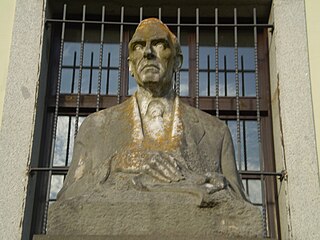 3
Adolfo Prieto y Álvarez de las Vallinas fue un empresario español que fundó e invirtió en empresas mexicanas.
3
Adolfo Prieto y Álvarez de las Vallinas fue un empresario español que fundó e invirtió en empresas mexicanas.
Eusebio Kino
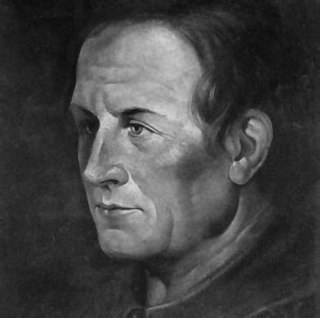 3
Eusebio Francisco Kino, SJ, often referred to as Father Kino, was an Italian Jesuit, missionary, geographer, explorer, cartographer, mathematician and astronomer born in the Bishopric of Trent, Holy...
3
Eusebio Francisco Kino, SJ, often referred to as Father Kino, was an Italian Jesuit, missionary, geographer, explorer, cartographer, mathematician and astronomer born in the Bishopric of Trent, Holy...
Juan Salvador Agraz
 3
Juan Salvador Agraz y Ramírez de Prado fue un destacado ingeniero químico mexicano, nacido en San Agustín de Tecolotlán, Jalisco, México
3
Juan Salvador Agraz y Ramírez de Prado fue un destacado ingeniero químico mexicano, nacido en San Agustín de Tecolotlán, Jalisco, México
Carmen Serdán
 3
María del Carmen Serdán Alatriste was a Mexican revolutionary. She shared the ideas of the Mexican Revolution and sympathized with Francisco I Madero. She was the sister of Aquiles Serdán Alatriste,...
3
María del Carmen Serdán Alatriste was a Mexican revolutionary. She shared the ideas of the Mexican Revolution and sympathized with Francisco I Madero. She was the sister of Aquiles Serdán Alatriste,...
Pedro de Gante
 3
Pieter van der Moere, also known as Brother Pedro de Gante or Pedro de Mura was a Franciscan missionary in sixteenth century Mexico. Born in Geraardsbergen in present-day Belgium, he was of Flemish...
3
Pieter van der Moere, also known as Brother Pedro de Gante or Pedro de Mura was a Franciscan missionary in sixteenth century Mexico. Born in Geraardsbergen in present-day Belgium, he was of Flemish...
Francisco Medina Ascencio
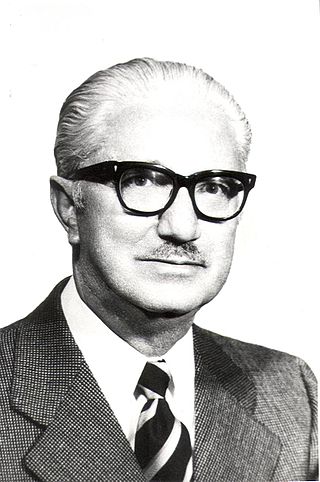 3
Francisco Medina Ascencio fue un político mexicano, Gobernador de Jalisco y Presidente Municipal de Guadalajara.
3
Francisco Medina Ascencio fue un político mexicano, Gobernador de Jalisco y Presidente Municipal de Guadalajara.
Javier Rojo Gómez
 3
Javier Rojo Gómez fue un abogado y político mexicano, miembro del Partido Revolucionario Institucional. Ocupó numerosos cargos políticos entre ellos, el de Jefe del Departamento del Distrito Federal,...
3
Javier Rojo Gómez fue un abogado y político mexicano, miembro del Partido Revolucionario Institucional. Ocupó numerosos cargos políticos entre ellos, el de Jefe del Departamento del Distrito Federal,...
Gustavo Baz Prada
 3
Gustavo Baz Prada was a Mexican politician and medical doctor. He was Governor of the State of Mexico from 1914 to 1915 and from 1957 to 1963.
3
Gustavo Baz Prada was a Mexican politician and medical doctor. He was Governor of the State of Mexico from 1914 to 1915 and from 1957 to 1963.
Manuel Sabino Crespo
 3
Manuel Sabino Crespo fue un sacerdote católico novohispano que se unió al movimiento insurgente durante la guerra de la independencia de México.
3
Manuel Sabino Crespo fue un sacerdote católico novohispano que se unió al movimiento insurgente durante la guerra de la independencia de México.
Uriel
 3
Uriel, Auriel or Oriel is the name of one of the archangels who is mentioned in the post-exilic rabbinic tradition and in certain Christian traditions. He is well known in the Russian Orthodox...
3
Uriel, Auriel or Oriel is the name of one of the archangels who is mentioned in the post-exilic rabbinic tradition and in certain Christian traditions. He is well known in the Russian Orthodox...
José Clemente Orozco
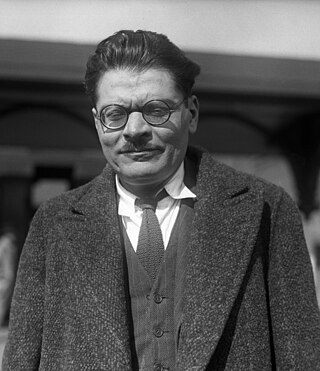 3
José Clemente Orozco was a Mexican caricaturist and painter, who specialized in political murals that established the Mexican Mural Renaissance together with murals by Diego Rivera, David Alfaro...
3
José Clemente Orozco was a Mexican caricaturist and painter, who specialized in political murals that established the Mexican Mural Renaissance together with murals by Diego Rivera, David Alfaro...
José Mariano Jiménez
 3
José Mariano Jiménez was a Mexican engineer and rebel officer active at the beginning of the Mexican War of Independence.
3
José Mariano Jiménez was a Mexican engineer and rebel officer active at the beginning of the Mexican War of Independence.
Lorenzo Boturini Benaduci
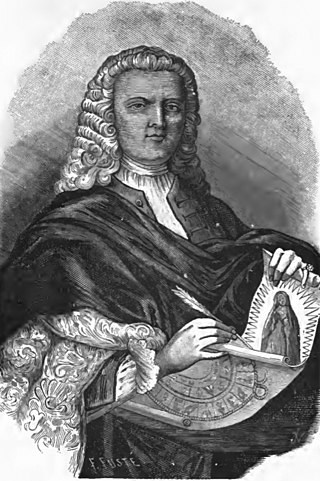 3
Lorenzo Boturini Benaducci 1698, Sondrio, Italy – 1749, Madrid) was a historian, antiquary and ethnographer of New Spain, the Spanish Empire's colonial dominions in North America.
3
Lorenzo Boturini Benaducci 1698, Sondrio, Italy – 1749, Madrid) was a historian, antiquary and ethnographer of New Spain, the Spanish Empire's colonial dominions in North America.
Jaime Torres Bodet
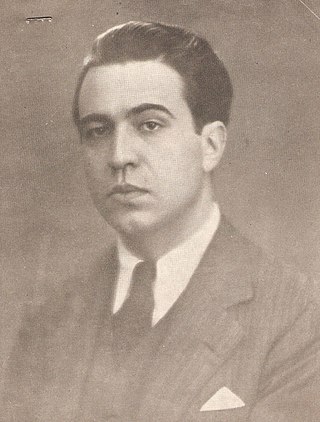 3
Jaime Mario Torres Bodet was a prominent Mexican politician and writer who served in the executive cabinet of three Presidents of Mexico. He was the second Director-General of the United Nations...
3
Jaime Mario Torres Bodet was a prominent Mexican politician and writer who served in the executive cabinet of three Presidents of Mexico. He was the second Director-General of the United Nations...
Rafael E. Melgar
 3
Rafael Eustacio Melgar Andrade fue un militar y político mexicano.
3
Rafael Eustacio Melgar Andrade fue un militar y político mexicano.
Juan Álvarez
 3
Juan Nepomuceno Álvarez Hurtado de Luna, generally known as Juan Álvarez, was a general, long-time caudillo in southern Mexico, and president of Mexico for two months in 1855, following the liberals'...
3
Juan Nepomuceno Álvarez Hurtado de Luna, generally known as Juan Álvarez, was a general, long-time caudillo in southern Mexico, and president of Mexico for two months in 1855, following the liberals'...
Lauro Villar Ochoa
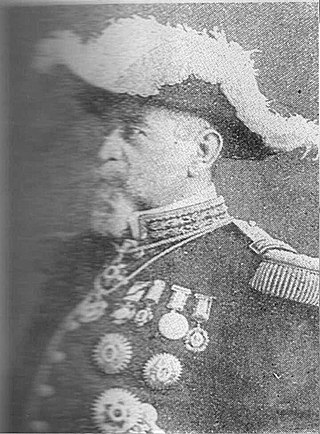 3
Lauro Villar Ochoa was a Mexican military general who is known for defending the National Palace of Mexico and Francisco I. Madero's administration, along with Ángel Ortiz Monasterio, from the...
3
Lauro Villar Ochoa was a Mexican military general who is known for defending the National Palace of Mexico and Francisco I. Madero's administration, along with Ángel Ortiz Monasterio, from the...
José María Vértiz
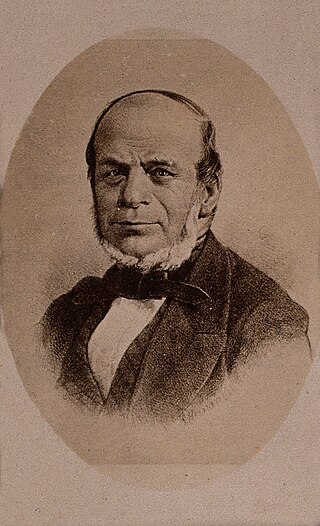 3
José María Vértiz y Delgado fue un médico oftalmólogo mexicano.
3
José María Vértiz y Delgado fue un médico oftalmólogo mexicano.
Romulo Garza Guerra
 3
Rómulo Garza Guerra fue un empresario y filántropo mexicano. Desempeñó diversos cargos en Vidriera Monterrey hasta llegar a ser Gerente General y miembro del consejo de Administración del Grupo...
3
Rómulo Garza Guerra fue un empresario y filántropo mexicano. Desempeñó diversos cargos en Vidriera Monterrey hasta llegar a ser Gerente General y miembro del consejo de Administración del Grupo...
Oscar Wilde
 3
Oscar Fingal O'Fflahertie Wills Wilde was an Irish poet and playwright. After writing in different forms throughout the 1880s, he became one of the most popular playwrights in London in the early...
3
Oscar Fingal O'Fflahertie Wills Wilde was an Irish poet and playwright. After writing in different forms throughout the 1880s, he became one of the most popular playwrights in London in the early...
John the Baptist
 3
John the Baptist was a Jewish preacher active in the area of the Jordan River in the early 1st century AD. He is also known as Saint John the Forerunner in Eastern Orthodoxy, John the Immerser in...
3
John the Baptist was a Jewish preacher active in the area of the Jordan River in the early 1st century AD. He is also known as Saint John the Forerunner in Eastern Orthodoxy, John the Immerser in...
Jerome
 3
Jerome, also known as Jerome of Stridon, was an early Christian priest, confessor, theologian, translator, and historian; he is commonly known as Saint Jerome.
3
Jerome, also known as Jerome of Stridon, was an early Christian priest, confessor, theologian, translator, and historian; he is commonly known as Saint Jerome.
Simón Bolívar
 3
Simón José Antonio de la Santísima Trinidad Bolívar Palacios Ponte y Blanco was a Venezuelan military and political leader who led what are currently the countries of Colombia, Venezuela, Ecuador,...
3
Simón José Antonio de la Santísima Trinidad Bolívar Palacios Ponte y Blanco was a Venezuelan military and political leader who led what are currently the countries of Colombia, Venezuela, Ecuador,...
Dr. Atl
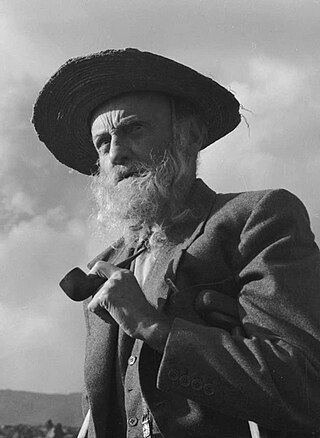 3
Gerardo Murillo Coronado, also known by his signature "Dr. Atl", was a Mexican painter and writer. He was actively involved in the Mexican Revolution in the Constitutionalist faction led by...
3
Gerardo Murillo Coronado, also known by his signature "Dr. Atl", was a Mexican painter and writer. He was actively involved in the Mexican Revolution in the Constitutionalist faction led by...
Joaquín Amaro
 3
Joaquín Amaro Domínguez was a Mexican revolutionary general and military reformer. He served as Secretary of War in the cabinets of Presidents Plutarco Elías Calles, Emilio Portes Gil, and Pascual...
3
Joaquín Amaro Domínguez was a Mexican revolutionary general and military reformer. He served as Secretary of War in the cabinets of Presidents Plutarco Elías Calles, Emilio Portes Gil, and Pascual...
Rodolfo Chávez Carrillo
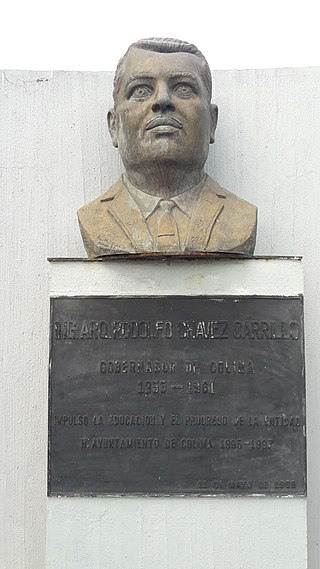 3
El Arq. Rodolfo Chávez Carrillo fue un político mexicano y gobernador del Estado de Colima de 1955 a 1961. Construyó una gran cantidad de escuelas y carreteras rurales. Durante su gobierno se llevó a...
3
El Arq. Rodolfo Chávez Carrillo fue un político mexicano y gobernador del Estado de Colima de 1955 a 1961. Construyó una gran cantidad de escuelas y carreteras rurales. Durante su gobierno se llevó a...
Isidro Fabela
 3
José Isidro Fabela Alfaro was a Mexican judge, politician, professor, writer, publisher, governor of the State of Mexico, diplomat, and delegate to the now defunct League of Nations. Fabela was born...
3
José Isidro Fabela Alfaro was a Mexican judge, politician, professor, writer, publisher, governor of the State of Mexico, diplomat, and delegate to the now defunct League of Nations. Fabela was born...
Xicotencatl I
 3
Xicotencatl I or Xicotencatl the Elder was a long-lived teuctli of Tizatlan, a Nahua altepetl (city-state) within the Confederacy of Tlaxcala, in what is now Mexico. According to one source,...
3
Xicotencatl I or Xicotencatl the Elder was a long-lived teuctli of Tizatlan, a Nahua altepetl (city-state) within the Confederacy of Tlaxcala, in what is now Mexico. According to one source,...
Luis Cabrera Lobato
 3
Luis Vicente Cabrera Lobato was a Mexican lawyer, politician and writer. His pen name for his political essays was "Lic. Blas Urrea"; the more literary works he wrote as "Lucas Rivera". During the...
3
Luis Vicente Cabrera Lobato was a Mexican lawyer, politician and writer. His pen name for his political essays was "Lic. Blas Urrea"; the more literary works he wrote as "Lucas Rivera". During the...
Ignacio de la Llave
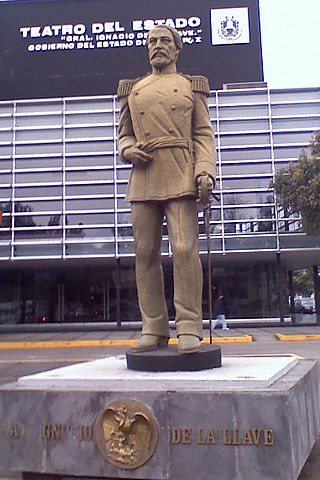 3
Ignacio de la Llave y Segura Zevallos was a general and the governor of the Mexican state of Veracruz (1861–1862).
3
Ignacio de la Llave y Segura Zevallos was a general and the governor of the Mexican state of Veracruz (1861–1862).
Jaime Nunó
 3
Jaime Nunó Roca was a Spanish composer from Catalonia who composed the music for the Mexican national anthem.
3
Jaime Nunó Roca was a Spanish composer from Catalonia who composed the music for the Mexican national anthem.
Manuel T. Gonzaullas
 3
Manuel Trazazas Gonzaullas was a Texas Rangers captain and a staff member of the Texas government.
3
Manuel Trazazas Gonzaullas was a Texas Rangers captain and a staff member of the Texas government.
José Antonio de Alzate y Ramírez
 3
José Antonio de Alzate y Ramírez was a priest in New Spain, scientist, historian, and cartographer.
3
José Antonio de Alzate y Ramírez was a priest in New Spain, scientist, historian, and cartographer.
Wilhelm von Humboldt
 3
Friedrich Wilhelm Christian Karl Ferdinand von Humboldt was a German philosopher, linguist, government functionary, diplomat, and founder of the Humboldt University of Berlin, which was named after...
3
Friedrich Wilhelm Christian Karl Ferdinand von Humboldt was a German philosopher, linguist, government functionary, diplomat, and founder of the Humboldt University of Berlin, which was named after...
Gabriela Mistral
 3
Lucila Godoy Alcayaga, known by her pseudonym Gabriela Mistral, was a Chilean poet-diplomat, educator, and Catholic. She was a member of the Secular Franciscan Order or Third Franciscan order. She...
3
Lucila Godoy Alcayaga, known by her pseudonym Gabriela Mistral, was a Chilean poet-diplomat, educator, and Catholic. She was a member of the Secular Franciscan Order or Third Franciscan order. She...
Rubén Darío
 3
Félix Rubén García Sarmiento, known as Rubén Darío, was a Nicaraguan poet who initiated the Spanish-language literary movement known as modernismo (modernism) that flourished at the end of the 19th...
3
Félix Rubén García Sarmiento, known as Rubén Darío, was a Nicaraguan poet who initiated the Spanish-language literary movement known as modernismo (modernism) that flourished at the end of the 19th...
Bernardino de Sahagún
 3
Bernardino de Sahagún was a Franciscan friar, missionary priest and pioneering ethnographer who participated in the Catholic evangelization of colonial New Spain. Born in Sahagún, Spain, in 1499, he...
3
Bernardino de Sahagún was a Franciscan friar, missionary priest and pioneering ethnographer who participated in the Catholic evangelization of colonial New Spain. Born in Sahagún, Spain, in 1499, he...
Francisco José Múgica
 3
Francisco José Múgica Velázquez was a Mexican military revolutionary, major general and politician. He participated in the Constituent Congress of 1917 that produced the Constitution of Mexico....
3
Francisco José Múgica Velázquez was a Mexican military revolutionary, major general and politician. He participated in the Constituent Congress of 1917 that produced the Constitution of Mexico....
Jesús Reyes Heroles
 3
Jesús Reyes Heroles fue un político, jurista, historiador y académico mexicano. Padre del economista y funcionario Jesús Reyes-Heroles González-Garza y del escritor y analista político Federico...
3
Jesús Reyes Heroles fue un político, jurista, historiador y académico mexicano. Padre del economista y funcionario Jesús Reyes-Heroles González-Garza y del escritor y analista político Federico...
Saint George
 3
Saint George, also George of Lydda, was an early Christian martyr who is venerated as a saint in Christianity. According to tradition, he was a soldier in the Roman army. Of Cappadocian Greek origin,...
3
Saint George, also George of Lydda, was an early Christian martyr who is venerated as a saint in Christianity. According to tradition, he was a soldier in the Roman army. Of Cappadocian Greek origin,...